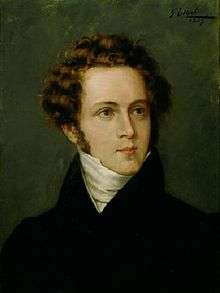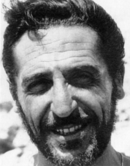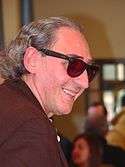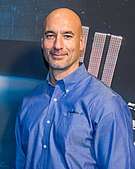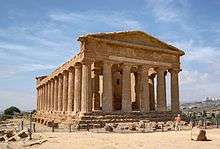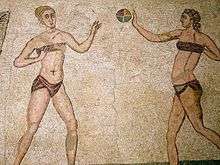Catania
Catania (UK: /kəˈteɪniə, -ˈtɑːn-/, US: /-njə, kəˈtæniə/,[3][4][5] Sicilian and Italian: [kaˈtaːnja] (![]()
Catania | |||||||||||||||||||
|---|---|---|---|---|---|---|---|---|---|---|---|---|---|---|---|---|---|---|---|
| Comune di Catania | |||||||||||||||||||
Catania skyline | |||||||||||||||||||
 Flag  Coat of arms | |||||||||||||||||||
Location of Catania 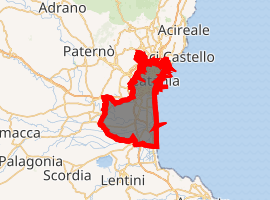
| |||||||||||||||||||
 Catania Location of Catania in Sicily 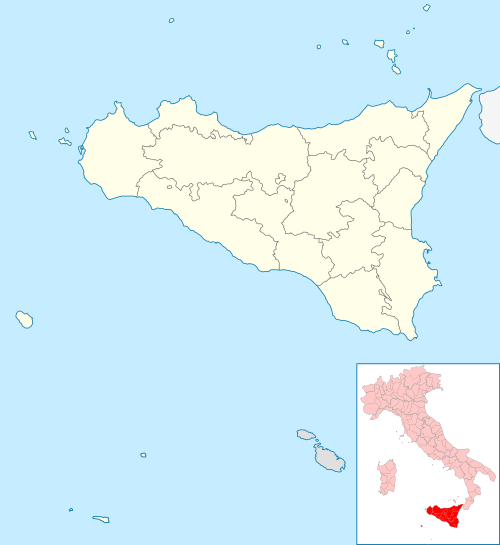 Catania Catania (Sicily) | |||||||||||||||||||
| Coordinates: 37°30′0″N 15°5′25″E | |||||||||||||||||||
| Country | Italy | ||||||||||||||||||
| Region | Sicily | ||||||||||||||||||
| Metropolitan city | Catania (CT) | ||||||||||||||||||
| Frazioni | Bicocca, Codavolpe, Junghetto, Pantano d'Arci, Paradiso degli Aranci, Passo Cavaliere, Passo del Fico, Passo Martino, Primosole, Reitano, Vaccarizzo, Villaggio Delfino | ||||||||||||||||||
| Government | |||||||||||||||||||
| • Mayor | Salvo Pogliese (FdI) | ||||||||||||||||||
| Area | |||||||||||||||||||
| • Total | 182.90 km2 (70.62 sq mi) | ||||||||||||||||||
| Elevation | 7 m (23 ft) | ||||||||||||||||||
| Population (1 January 2019)[2] | |||||||||||||||||||
| • Total | 311,584 | ||||||||||||||||||
| • Density | 1,700/km2 (4,400/sq mi) | ||||||||||||||||||
| Demonym(s) | Catanese | ||||||||||||||||||
| Time zone | UTC+1 (CET) | ||||||||||||||||||
| • Summer (DST) | UTC+2 (CEST) | ||||||||||||||||||
| Postal code | 95100 | ||||||||||||||||||
| Dialing code | 095 | ||||||||||||||||||
| ISTAT code | 087015 | ||||||||||||||||||
| Patron saint | St. Agatha | ||||||||||||||||||
| Saint day | 5 February | ||||||||||||||||||
| Website | Official website | ||||||||||||||||||
| |||||||||||||||||||
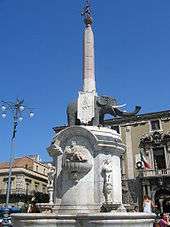
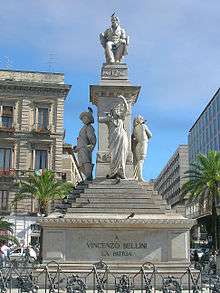
Catania was founded in the 8th century BC by Chalcidian Greeks.[6] The city was almost completely destroyed by a catastrophic earthquake in 1169.[6]
However, by the 14th century, and into the Renaissance period, Catania was one of Italy's most important cultural, artistic and political centres.[6] It was the site of Sicily’s first university, founded in 1434.[6][7] It has been the native or adopted home of some of Italy's most famous artists and writers, including the composers Vincenzo Bellini and Giovanni Pacini, and the writers Giovanni Verga, Luigi Capuana, Federico De Roberto and Nino Martoglio.
The city has been devastated several times by volcanic eruptions from nearby Mount Etna, the most violent of which was in 1669. And it suffered through another severely damaging earthquake in 1693.[6]
Catania today is the industrial, logistical, and commercial center of Sicily. Its airport, the Catania-Fontanarossa Airport, is the largest in Southern Italy.
However, it is also noted for its history, culture, architecture, and gastronomy. The section of the city known as the “old town” features some of the most striking examples of baroque architecture in Italy, and is a UNESCO World Heritage Site.
Etymology
The ancient indigenous population of the Sicels named their villages after geographical attributes of their location. The Sicilian word, katane, means "grater, flaying knife, skinning place" or a "crude tool apt to pare". Other translations of the name are "harsh lands", "uneven ground", "sharp stones", or "rugged or rough soil". The latter etymologies are easily justifiable since, for many centuries following an eruption, the city has always been rebuilt within its black-lava landscape.[8]
Around 263 BC, the city was variously known as Catĭna (Latin: [ˈkatɪna]) and Catăna (Latin: [ˈkatana]; Ancient Greek: Κατάνη [katánɛː]).[lower-alpha 1] The former has been primarily used for its supposed assonance with catina, the Latin feminization of the name catinus.[9] Catinus has two meanings: "a gulf, a basin or a bay" and "a bowl, a vessel or a trough", thanks to the city's distinctive topography.
Around 900, when Catania was part of the emirate of Sicily, it was known in Arabic as Balad al-fīl (بلد الفيل) and Madīnat al-fīl (مدينة الفيل), respectively meaning "the Village (or Country) of the Elephant" and "the City of the Elephant".[10] The Elephant is the lava sculpture over the fountain in Piazza Duomo: most likely a prehistoric sculpture that was reforged during the Byzantine Era, it appears to be a talisman that was reputedly powerful enough to protect the city from enemies and to keep away misfortune, plagues, or natural calamities. Another Arab toponym was Qaṭāniyyah (قطانية), allegedly from the Arabic word for the "leguminous plants".[11] Pulses like lentils, beans, peas, broad beans, and lupins were chiefly cultivated in the plains around the city well before the arrival of Aghlabids. Afterwards, many Arabic agronomists developed these crops and the citrus orchards in the area around the city. The toponym Wādī Mūsá (وادي موسى), or "the Valley of Moses" (from the Arabic name of the Simeto River), was rarely used.[11][12][13]
Geography
Catania is located on the east coast of the island of Sicily, at the foot of Mount Etna.
As observed by Strabo, the location of Catania at the foot of Mount Etna has been both a curse and a blessing. On the one hand, violent outbursts of the volcano throughout history have destroyed large parts of the city, whilst on the other hand the volcanic ashes yield fertile soil, especially suited for the growth of vines. (Strab. vi. p. 269)
Two subterranean rivers run under the city; the Amenano, which surfaces at one single point south of Piazza Duomo, and the Longane (or Lognina).[14]
Climate
The Köppen Climate Classification subtype for this climate is "Csa" (Mediterranean Climate).[15] It has hot summers, one of the hottest in the whole country of Italy (a feature characterising nearly every month). Temperatures of 40 °C (104 °F) are surpassed almost every year a couple of times,
Winters are mild with chilly nights (not rare peaks around 20 °C or 68 °F) . Most of precipitation is concentrated from October to March, leaving late spring and summer virtually dry (some years there is no rain for 3–4 months). The city receives around 500 millimetres (20 inches) of rain per year, although the amount can vary greatly from year to year (wettest over 1,200 millimetres or 47 inches, driest under 250 millimetres or 9.8 inches,).
During winter nights lows can occasionally go under 0 °C (32 °F). Highs under 10 °C (50 °F) can happen during winter.[16] Snow, due to the presence of Etna that protects the city from the northern winds, is an uncommon occurrence, but occasional snow flurries have been seen over the recent years especially in the hilly districts, more substantial in the northern hinterland. More recently, light snowfalls occurred on 9 February 2015, 6 January 2017 and 5 January 2019, but the last heavy snowfall dates back to 17 December 1988.
| Climate data for Catania, Sicily (Catania-Fontanarossa) | |||||||||||||
|---|---|---|---|---|---|---|---|---|---|---|---|---|---|
| Month | Jan | Feb | Mar | Apr | May | Jun | Jul | Aug | Sep | Oct | Nov | Dec | Year |
| Record high °C (°F) | 25.0 (77.0) |
25.1 (77.2) |
29.4 (84.9) |
34.0 (93.2) |
37.5 (99.5) |
42.0 (107.6) |
45.3 (113.5) |
43.4 (110.1) |
38.0 (100.4) |
34.6 (94.3) |
29.1 (84.4) |
23.9 (75.0) |
45.3 (113.5) |
| Average high °C (°F) | 15.8 (60.4) |
16.4 (61.5) |
17.8 (64.0) |
20.3 (68.5) |
24.2 (75.6) |
28.3 (82.9) |
31.7 (89.1) |
32.0 (89.6) |
29.1 (84.4) |
24.7 (76.5) |
20.3 (68.5) |
16.8 (62.2) |
23.1 (73.6) |
| Daily mean °C (°F) | 10.6 (51.1) |
10.9 (51.6) |
12.2 (54.0) |
14.3 (57.7) |
17.9 (64.2) |
22.0 (71.6) |
25.1 (77.2) |
25.6 (78.1) |
23.1 (73.6) |
19.2 (66.6) |
15.0 (59.0) |
11.8 (53.2) |
17.3 (63.1) |
| Average low °C (°F) | 5.3 (41.5) |
5.4 (41.7) |
6.5 (43.7) |
8.3 (46.9) |
11.6 (52.9) |
15.6 (60.1) |
18.5 (65.3) |
19.2 (66.6) |
17.1 (62.8) |
13.7 (56.7) |
9.7 (49.5) |
6.7 (44.1) |
11.5 (52.7) |
| Record low °C (°F) | −5.0 (23.0) |
−4.0 (24.8) |
−3.0 (26.6) |
0.0 (32.0) |
4.6 (40.3) |
9.6 (49.3) |
12.1 (53.8) |
14.0 (57.2) |
9.0 (48.2) |
1.0 (33.8) |
−0.6 (30.9) |
−2.0 (28.4) |
−5.0 (23.0) |
| Average precipitation mm (inches) | 74.8 (2.94) |
52.6 (2.07) |
46.0 (1.81) |
35.4 (1.39) |
19.2 (0.76) |
6.0 (0.24) |
5.0 (0.20) |
8.9 (0.35) |
45.0 (1.77) |
106.1 (4.18) |
62.3 (2.45) |
85.9 (3.38) |
547.2 (21.54) |
| Average precipitation days (≥ 1 mm) | 9 | 7 | 6 | 5 | 3 | 1 | 0 | 1 | 4 | 8 | 7 | 9 | 60 |
| Mean monthly sunshine hours | 112.1 | 124.0 | 165.9 | 191.4 | 231.3 | 281.2 | 315.2 | 280.4 | 242.3 | 186.1 | 162.0 | 134.9 | 2,426.8 |
| Source 1: Hong Kong Observatory[17] (1961–1990) | |||||||||||||
| Source 2: (1991–2010) sunlight: | |||||||||||||
Demographics
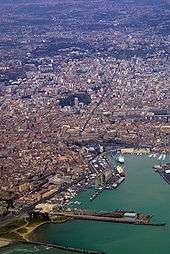
In January 2015, there were 315,601 people residing in Catania,[2] of whom 47.2% were male and 52.8% were female. Minors (people under age 18) totalled 20.50 percent of the population compared to pensioners who number 18.87 percent. This compares with the Italian average of 18.06 percent (minors) and 19.94 percent (pensioners).
The average age of Catania residents is 41 compared to the Italian average of 42. In the five years between 2002 and 2007, the population of Catania declined by 3.35 percent, while Italy as a whole grew by 3.85 percent.[2] The reason for this population decline in the comune di Catania is mainly due to a large segment of the population leaving the city centre to go to live in the uptown residential areas of the comuni of the Metropolitan area. As a result of this, while the population in the comune di Catania declines, the population of the hinterland comuni increases making the overall population of the Metropolitan area increase.[2]
The current birth rate of Catania is 10.07 births per 1,000 inhabitants compared to the Italian average of 9.45 births. As of 2006, 98.03% of the population was Italian. The largest immigrant groups come from Sub-Saharan Africa: 0.69%, South Asia: 0.46%, and from other European countries (particularly from Ukraine and Poland): 0.33%.
History
Foundation
Around 729 BC, the ancient village of Katane was occupied by Chalcidian Greek settlers from nearby Naxos along the coast. It became the Chalcidian colony of Katánē under a leader named Euarchos (Euarchus) and the native population was rapidly Hellenised.
Thucydides states that it came into existence slightly later than Leontini (modern Lentini), which he claims was five years after Syracuse, or 730 BC.[18]
The settlement's acropolis was on the hill of Monte Vergine, a defensible hill immediately west of the current city centre. The port of Catania appears to have been much frequented in ancient time and was the chief place of export for the corn of the rich neighbouring plains.
Greek Catania
In ancient times Catania was associated with the legend of Amphinomos and Anapias, who, on occasion of a great eruption of Etna, abandoned all their property and carried off their aged parents on their shoulders. The stream of lava itself was said to have parted, and flowed aside so as not to harm them. Statues were erected to their honour, and the place of their burial was known as the Campus Piorum; the Catanaeans even introduced the figures of the youths on their coins, and the legend became a favorite subject of allusion and declamation among the Latin poets, of whom the younger Lucilius and Claudian have dwelt upon it at considerable length.[19][20][21][22][23][24][25][26][27][28][29]
Catania was the birthplace of the philosopher and legislator Charondas (late 6th c. BC) who introduced his celebrated laws there. His legislation was extended to the other Chalcidic cities, not only of Sicily, but of Magna Graecia also, as well as to his own country.[30] It is evident that Catania had close relations with these other cities during this time.
It was residence of the poets Ibycus and Stesichorus (c. 630–555 BC), who was buried in a magnificent sepulchre outside one of the gates, hence its name of Porta Stesichoreia. Xenophanes (c. 570-475 BC), one of the founders of the Eleatic school of philosophy, also spent the latter years of his life in the city[31] so that it was evidently, at an early period, a place of cultivation and refinement.
Catania appears to have retained its independence up to the reign of the despot Hieron of Syracuse, whereupon in 476 BC he expelled all the original inhabitants of Catania and replaced them with those he ruled over at Leontini – said to have numbered no less than 10,000, consisting partly of Syracusans and Peloponnesians. At the same time he changed the city's name to Αἴτνη (Aítnē, Aetna or Ætna, after the nearby Mount Etna, and proclaimed himself the Oekist or founder of the new city. For this he was celebrated by Pindar, and after his death he received heroic honours from the citizens of his new colony.[32]
A few years after the death of Hieron and the expulsion of Thrasybulus, the Syracusans combined with Ducetius, king of the Sicels, to expel the newly settled inhabitants of Catania, who went on to settle in the fortress of Inessa (to which they gave the name Aetna). The old Chalcidic citizens were reinstated to the city in 461 BC.[33]
The period that followed appears to have been one of great prosperity for Catania, as well as for the Sicilian cities in general.
In the Peloponnesian War during the great Athenian expedition to Sicily in 415 BC, the Catanaeans at first refused to allow the Athenians into their city, but after the latter had forced an entrance, they found themselves compelled to honour the alliance of their invaders after a famous speech that Alcibiades would have made in front of the assembly. Catania became the headquarters of the Athenian army throughout the first year of the expedition, and the base of their subsequent operations against Syracuse.[34] After the defeat of the Athenians it was open to attack by Syracuse but was saved by the Carthaginian invasion of Sicily in 409 BC.
But in 403 BC it fell into the power of Dionysius I of Syracuse, who plundered the city and sold its citizens as slaves, after which he populated it with Campanian mercenaries. These, however, quit in 396 BC and retired to Aetna, on the approach of the great Carthaginian armament under Himilco and Mago. After the great naval Battle of Catana (397 BC) which was fought off Catania and in which the latter defeated Leptines of Syracuse, the city fell into the hands of the Carthaginians.[35]
Calippus, the assassin of Dion of Syracuse, held Catania for a time (Plut. Dion. 58); and when Timoleon landed in Sicily in 344 BC Catania was subject to the despot Mamercus who at first joined the Corinthian leader, but afterwards abandoned this allegiance for that of the Carthaginians. As a consequence he was attacked and expelled by Timoleon in 338 BC.[36]
Catania was now restored to liberty, and appears to have continued to retain its independence; during the wars of Agathocles of Syracuse from 311 BC with the Carthaginians, it sided at one time with the former, at others with the latter; and when Pyrrhus landed in Sicily in 278 BC, Catania was the first to open its gates to him, and received him with the great splendour.[37]
The first introduction of dancing to accompany the flute was also ascribed to Andron, a citizen of Catania.[38]
Roman rule
In the First Punic War Catania was one of the first cities of Sicily to submit to the Roman Republic after their first successes in 263 BC when it was taken by Valerius Messalla.[39][40] A sundial was part of the booty which was placed in the Comitium in Rome.[41] Since then the city became a civitas decumana i.e. was subject to the payment of a tenth of its agricultural income as a tax to Rome. The conqueror of Syracuse, Marcus Claudius Marcellus, built a gymnasium here.[42]
It appears to have continued afterwards to maintain its friendly relations with Rome and though it did not enjoy the advantages of a confederate city (foederata civitas), like its neighbours Tauromenium (modern Taormina) and Messana (modern Messina), it rose to a position of great prosperity under the Roman rule.
Around 135 BC during the First Servile War, it was conquered by rebel slaves.[43]
One of the most serious eruptions of Mount Etna happened in 121 BC, when a great part of Catania was overwhelmed by streams of lava, and the hot ashes fell in such quantities in the city itself, as to break in the roofs of the houses. Catana was in consequence exempted, for 10 years, from its usual contributions to the Roman state.[44] The greater part of the broad tract of plain to the southwest of Catana (now called the Piana di Catania, a district of great fertility), appears to have belonged, in ancient times, to Leontini or Centuripa (modern Centuripe), but that portion of it between Catana itself and the mouth of the Symaethus was annexed to Catana and must have furnished abundant supplies of grain.
Cicero repeatedly mentions it as, in his time, a wealthy and flourishing city; it retained its ancient municipal institutions, its chief magistrate bearing the title of Proagorus; and appears to have been one of the principal ports of Sicily for the export of corn.[45]
In the Sicilian revolt from 44 BC Sextus Pompeius selected Sicily as his base and Catania gave in to Sextus' revolt and joined his forces. Sextus amassed a formidable army and a large fleet of warships at his base at Messana, with many slaves joining from the villas of patricians. After the victory of Augustus in 36 BC much of the vast farmland in Sicily was either ruined or left empty, and much of this land was taken and distributed to members of the legions which had fought there. Catania suffered severely from the ravages but was afterwards one of the cities raised to the status of colony by Augustus which restored its prosperity through the settlement of veterans, so that in Strabo's time it was one of the few cities in the island that was flourishing.[46]
Another revolt led by the gladiator Selurus in 35 BC created mayhem for a while.[47]
The Roman aqueduct of Catania was the largest in Roman Sicily at 24 km length starting from the springs of Santa Maria di Licodia.
It retained its colonial rank, as well as its prosperity, throughout the period of the Roman Empire; so that in the 4th century Ausonius in his Ordo Nobilium Urbium, notices Catania and Syracuse alone among the cities of Sicily.[48]
Middle Ages
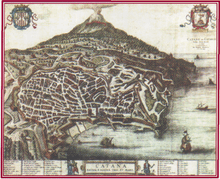
Catania was sacked by the Vandals of Gaiseric in 440–441. After a period under the Ostrogoths, it was reconquered in 535 by the Eastern Roman Empire, under which (aside from a short period in 550–555) it remained until the 9th century. It was the seat of the Byzantine governor of the island.
Catania was under the Islamic emirate of Sicily until 1072, when it fell to the Normans of Roger I of Sicily. Subsequently, the city was ruled by a bishop-count. In 1194–1197 the city was sacked by German soldiers during after the conquest of the island by emperor Henry VI. In 1232 it rebelled to the former's son, Frederick II, who later built a massive castle, Castello Ursino and also made Catania a royal city, ending the dominance of the bishops. Catania was one of the main centers of the Sicilian Vespers revolt (1282) against the House of Anjou, and was the seat of the incoronation of the new Aragonese king of Sicily, Peter I. In the 14th century it gained importance as it was chosen by the Aragonese as a Parliament and Royal seat. Here, in 1347, it was signed the treaty of peace that ended the long War of the Vesper between Aragonese and Angevines. Catania lost its capital role when, in the early 15th century, Sicily was turned into a member of the Crown of Aragon, and kept its autonomy and original privileges specially during the period from 1282 to 1410.
In 1434 King Alfonso V founded here the Siciliae Studium Generale, the oldest university in the island.
Early Modern times
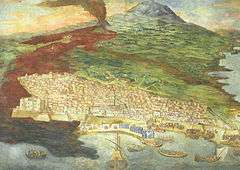
With the unification of Castile and Aragon (early 16th century[49]), Sicily became part of the Spanish Empire. It rebelled against the foreign government in 1516 and 1647.[50]
In 1669 the city's surroundings suffered great material damage from the 1669 Etna eruption. The city itself was largely saved by its walls that diverted most of the lava into the port. Afterwards in 1693 the city was then completely destroyed by a heavy earthquake and its aftershocks. The city was then rebuilt in the Baroque architecture that nowadays characterizes it.
Unified Italy
Catania was one of the vanguards of the movement for the Sicilian autonomy in the early 19th century.
In 1860 Giuseppe Garibaldi's expedition of the Thousand conquered Sicily for Piedmont from the Kingdom of the Two Sicilies. Since the following year Catania was part of the newly unified Italy, whose history it shares since then.
During World War II, Catania was heavily bombed by the Allied air forces, owing to the presence of two of the main Axis airfields in Sicily (Gerbini and Fontanarossa) and for its strategically important port and marshalling yard. Altogether, the city suffered eighty-seven air raids. The heaviest raids took place in the spring and summer of 1943, before and during the Allied invasion of Sicily; they caused heavy damage to che city (among others, twenty-eight churches and most historic palaces suffered damage), killed 750 inhabitants and prompted most of the population to flee to the countryside.[51][52][53][54] After heavy fighting across eastern Sicily, Catania was eventually captured by the British 8th Army on 5 August 1943.[55]
After the conflict, and the constitution of the Italian Republic (1946), Catania attempted to catch up with the economic and social development of Italy's richer northern regions. The problems faced in Catania were emblematic of those faced by other towns in the Mezzogiorno, namely a heavy gap in industrial development and infrastructures, and the threat of the mafia. This notwithstanding, during the 1960s (and partly during the 1990s) Catania enjoyed development and a period of economic, social and cultural success. In the first decade of the 21st century, Catania's economic and social development somewhat faltered and the city is again facing economic and social stagnation. This was aggravated by the economical crisis left by the Forza Italia administration of mayor Scapagnini in 2008.[56]
Administrative divisions
Metropolitan City
.svg.png)
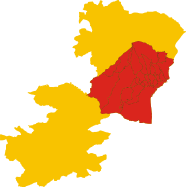

The Metropolitan City of Catania was established in 2015 and replaced the former Province of Catania. It includes the city proper and 57 comuni (municipalities). The population of the Metropolitan City is 1,107,702.[2]
Metropolitan area
The Metropolitan area of Catania includes the comune of Catania (311,584 inhabitants[2]) and 26 surrounding comuni[57] forming an urban belt (498,650 inhabitants[2]). The total population of the Metropolitan area of Catania is therefore 810,234. The comuni of the Metropolitan area are:
- Aci Bonaccorsi
- Aci Castello
- Aci Catena
- Aci Sant'Antonio
- Acireale
- Belpasso
- Biancavilla
- Camporotondo Etneo
- Catania
- Gravina di Catania
- Mascalucia
- Misterbianco
- Motta Sant'Anastasia
- Nicolosi
- Paternò
- Pedara
- Ragalna
- San Giovanni la Punta
- San Gregorio di Catania
- San Pietro Clarenza
- Sant'Agata li Battiati
- Santa Maria di Licodia
- Santa Venerina
- Trecastagni
- Tremestieri Etneo
- Valverde
- Viagrande
- Zafferana Etnea
These comuni form a system with the centre of Catania sharing its economical and social life and creating an organic urban texture.
City proper
The city of Catania proper (comune di Catania) is divided in six administrative areas called circoscrizioni. The current administrative setup was established in 2013, modifying previous setups dating back to 1971, 1978 and 1995.
The six areas are:
- Centro storico
- Picanello-Ognina/Barriera-Canalicchio
- Borgo-Sanzio
- San Giovanni Galermo-Trappeto-Cibali
- Monte Po-Nesima/San Leone-Rapisardi
- San Giorgio-Librino/San Giuseppe La Rena-Zia Lisa-Villaggio Sant'Agata
Main sights
The symbol of the city is u Liotru, or the Fontana dell'Elefante, assembled in 1736 by Giovanni Battista Vaccarini. It portrays an ancient lavic stone elephant and is topped by an Egyptian obelisk from Syene. Legend has it that Vaccarini's original elephant was neuter, which the men of Catania took as an insult to their virility. To appease them, Vaccarini appropriately appended elephantine testicles to the original statue.
The Sicilian name u Liotru is a phonetic change of Heliodorus, a nobleman who, after trying without success to become bishop of the city, became a sorcerer and was therefore condemned to the stake. Legend has it that Heliodorus himself was the sculptor of the lava elephant and that he used to magically ride it in his fantastic travels from Catania to Constantinople.[58] Another legend has it that Heliodorus was able to transform himself into an elephant.
The presence of an elephant in the millenary history of Catania is surely connected to both zooarcheology and popular creeds. In fact, the prehistoric fauna of Sicily from the Upper Paleolithic, included dwarf elephants. Paleontologist Othenio Abel suggested that the presence of dwarf elephants in Sicily may be the origin of the legend of the Cyclops. Ancient Greeks, after finding the skulls of dwarf elephants, about twice the size of a human skull, with a large central nasal cavity (mistaken for a large single eye-socket) supposed that they were skulls of giants with a single eye.
The Catanian Museum of Mineralogy, Paleontology and Vulcanology holds the integral unburied skeleton of an Elephas falconeri in an excellent state of conservation. The first inhabitants of Etna molded such lavic artifact to idolize the mythical proboscidian.
Classical buildings
The city has been buried by lava a total of seventeen times in recorded history, and in layers under the present day city are the Roman city that preceded it, and the Greek city before that. Many of the ancient monuments of the Roman city have been destroyed by the numerous seisms. Currently, different ancient remains can be seen and visited in the city-centre, as part of an archaeological park (Parco Archeologico Greco-Romano di Catania).
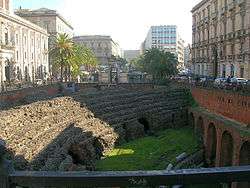
Ancient edifices include:
- Greek-Roman Theatre of Catania (2nd century)
- Odeon (3rd century). It could house up to 1500 spectators
- Amphitheatre
- Greek Acropolis of Montevergine
- Roman Aqueduct
- Roman Forum
- Roman broken arcades
- Christian basilicas, hypogea, burial monuments and Catacombs
- Roman Colonnade
Roman thermal structures
- Achillean Baths
- Terme dell’Indirizzo
- Terme di Santa Maria Odigitria
- Terme della Rotonda
- Baths of the Four Quoins
- Terme di Palazzo Asmundo
- Terme del Palazzo dell’Università
- Terme di Casa Gagliano
- Terme della Chiesa di Sant'Antonio Abate
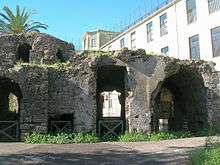
Baroque and historical churches
_-_Foto_Giovanni_Dall'Orto%2C_4-July-2008.jpg)
.jpg)
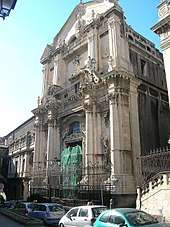
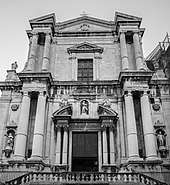
The Baroque city centre of Catania is a UNESCO World Heritage Site
- The Cathedral (1070–1093, rebuilt after the 1693 earthquake)
- Saint Agatha Abbey (1620)
- Saint Placidus (1769)
- Church of San Giuseppe al Duomo
- Church of Santissimo Sacramento al Duomo
- Church of San Martino dei Bianchi
- Church of Sant'Agata la Vetere (254)
- Saint Agatha by the Furnace or Saint Blaise (1098, rebuilt in 1700)
- Church of the Saint Jail or Saint Agatha at the Jail (Santo Carcere or Sant'Agata al Carcere) (1760). This temple includes the ancient jail where Saint Agatha was allegedly imprisoned during her martyrdom.
- Saint Francis of Assisi at the Immaculate (1329). It still houses the mortal remains of Queen Eleanor of Sicily, who decided and promoted the construction of the principal Franciscan building of Catania on the same place of the once Roman Temple of Minerva
- Saint Benedict of Nursia (1704–1713)
- Badìa Grande e Badìa Piccola del Chiostro delle Monache Benedettine
- Benedictine Nuns' Arch (Arco delle Monache Benedettine)
- Basilica della Collegiata, a notable example of Sicilian Baroque, whose façade was designed by Stefano Ittar
- Saint Mary of Ogninella
- Saint Michael the Lesser
- Saint Michael Archangel or Minorites' Church
- Saint Julian
- Saint Julian's Monastery
- Santa Teresa di Avila
- Saint Francis Borgia or Jesuits' Church
- Convent of the Jesuits
- Saint Mary of Jesus (1465, restored in 1706)
- Saint Dominic or Saint Mary the Great (1224)
- Dominicans Friary (1224)
- Saint Mary of Purity or Saint Mary of Visitation (1775)
- Madonna of Graces' Chapel
- Saint Ursula
- Saint Agatha on the Lavic Runnels
- Saint Euplius Old Church Ruins
- Church of San Gaetano alle Grotte (260)
- Basilica of the Most Holy Annunciated Mary of Carmel (1729)
- Saint Agatha by the Borough (1669, destroyed in 1693 and rebuilt in 1709). The "Borough" (il Borgo) is an inner district of Catania.
- Saint Nicholas by the Borough
- Church of the Santissimo Sacramento al Borgo
- Church of Santa Maria della Provvidenza al Borgo
- Chapel of the Blind's Housing (Ospizio dei Ciechi)
- Saint Camillus of the Crucifers
- Benedictine Monastery of San Nicolò l'Arena (1558)
- Basilica of San Nicola l'Arena (1687)
- Church of Santa Maria dell'Indirizzo (1730)
- Saint Clare (1563)
- Convent of the Poor Clares (1563)
- Saint Sebastian Martyr (1313)
- Saint Anne
- Sanctuary of Santa Maria dell'Aiuto
- Madonna of Loreto
- Church of San Giuseppe al Transito
- Church of Immacolata Concezione dei Minoritelli
- Church of Sant'Agata al Conservatorio delle Verginelle
- Church of Santa Maria dell'Itria or Odigitria).
- Saint Philip Neri
- Saint Martha
- Church of the Holy Child
- Our Lady of Providence
- Church of San Berillo in Santa Maria degli Ammalati
- Our Lady of the Poor
- Church of San Vincenzo de' Paoli
- Saint John the Baptist, in the suburb of San Giovanni di Galermo
- Saint Anthony Abbot
- Little Saviour's Byzantine Chapel
- Saint Augustine
- Church of the Most Holy Trinity
- Church of the Little Virgins
- Our Lady of the Rotunda
- Church of the Santissimo Sacramento Ritrovato (1796).[59]
- Sanctuary of Our Lady of Ognina (1308).[60] Ognina is the maritime quarter and the main fishing pole of Catania. Many bareboats and umpteen smacks gather and crowd here all year round. In its close vicinities there is a cylindric tower, known as Saint Mary's Tower (Torre Santa Maria),[61] which was restructured in the 16th century to prevent the frequent plunders of the Saracen pirates. The church is the result of the gradual modification of the Greek Temple Athena Longatis or Parthenos Longatis that existed on the steep reef. This cult was imported from a Boeotian region of Greece called Longas[62] from where the first Hellenic settlers of this borough probably came. After the earthquake of 1693 it was rebuilt on the same place but with a different orientation.
- Our Lady of Montserrat (1755)[63]
- Church of Santa Maria della Salute
- Saint Mary of La Salette
- Church of Santa Maria della Mercede
- Church of Santa Caterina al Rinazzo
- Our Lady of Concordia
- Church of Santa Maria della Guardia
- Our Lady of Consolation
- Church of Santissimo Crocifisso Maiorana
- Crucifix of Miracles
- Crucifix of Good Death
- Our Lady of La Mecca[64]
- Saint Cajetan at the Marina
- Most Holy Redeemer
- Saint Francis of Paola
- Church of the Divina Maternità
- Chapel of Mary Auxiliatrix
- Chapel of the Sacred Heart of Jesus
- Church of the Sacro Cuore al Fortino (1898)
- Saints George and Denis
- Church of the Sacred Heart of the Capuchins
- Saint Christopher
- Saints Cosmas and Damian
- Church of Santa Maria del Soccorso or Santa Maria della Palma
- Saint Vitus
- Church of the Santi Angeli Custodi
- Church of the Santissimo Salvatore
Other
.jpg)

- Ursino Castle, built by emperor Frederick II in the 13th century.
- Palace of the Elephants, designed by Giovan Battista Vaccarini. It houses the Town Hall.
- Biscari Palace
- Tezzano Palace
- Uzeda Gate
- The Medieval Gothic-Catalan Arch of Saint John of Friars (San Giovanni de' Fleres)
- Ferdinandean Gate or Garibaldi Gate (Porta Ferdinandea or Porta Garibaldi), a triumphal arch erected in 1768 to celebrate the marriage of Ferdinand I of Two Sicilies and Marie Caroline of Austria
- Porta del Fortino ("Redoubt Gate")
- Bellini Theater
- Sangiorgi Theater
- Palazzo Rosa ("Pink Palace")
- Negozio Frigeri ("Frigeri Shop", or "Frigeri Palace")
- The House of the Mutilateds of War (Casa del Mutilato) built in Fascist-style architecture
- Catania War Cemetery, a Commonwealth Graveyard located in the southern country hamlet of Bicocca[65][66]
- Palazzo delle Poste ("Post Office Palace")
- Bellini Garden, or Villa Bellini
- Catania Botanical Garden
- Pacini Garden, or Villa Pacini
- Gioeni Park
Economy
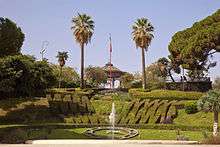
Catania is the first economic and industrial hub of Sicily. The city is famous for its mainly petrochemical industry, and the extraction of sulphur. In the year 2000, according to Census, Catania was the 14th richest city in Italy, with a GDP of US$6.6 billion (€6.304 billion), which was 0.54% of the Italian GDP, a GDP per capita of US$21,000 (€20,100) and an average GDP per employee of US$69,000 (€66,100).[67]
In the late-19th century and early-20th century, Catania began to be heavily industrialised, with its several factories and chimneys, often to the extant that it was referred to as Southern Italy's "Manchester". The economy of Catania suffered heavily from the bad effects of World War I, and was marked by an economic crisis and recession that culminated in the 1920s. Since then, the city lost its industrial and entrepreneurial importance. In the 1930s, Catania remained a small fishing town with derelict and disused industries. However, after the destruction of World War II, Catania's economy began to re-grow in the late-1950s and early-1960s. As a matter of fact, the city's economic growth was so rapid and dynamic that it was often nicknamed the "Milan of the South", or in Italian "Milano del Sud". This rapid economic growth prompted a great number of Sicilians living in the more rural areas, or smaller towns such as Enna, Ragusa and Caltanissetta, to move to the city to seek new jobs.
Today, Catania, despite several problems, has one of the most dynamic economies in the whole of Southern Italy. It still has a strong industrial and agricultural sector, and a fast-growing tourist industry, with many international visitors coming to visit the city's main sights and the nearby Etna volcano. It contains the headquarters or important offices of companies such as STMicroelectronics, and also several chemical and pharmaceutical businesses. There have been several new business developments to further boost Catania's economy, including the construction of Etnapolis,[68] a big shopping mall designed by Massimiliano Fuksas, the same architect who designed the FieraMilano industrial fair in Milan, or the Etna Valley,[69] where several high-tech offices are located.
Tourism is a fast-growing industry in Catania. Lately the administration and private companies have made several investments in the hospitality industry in order to make tourism a competitive sector in the Metropolitan City. Etnaland, a big amusement and water park located in Belpasso, in the Metropolitan area of Catania, 12 kilometers (7 miles) from the city center, is the largest in Southern Italy and attracts thousands of tourists, not only from Sicily, but also from the rest of Italy: according to Tripadvisor (2018) it is the third water park in Europe.[70]
Education
The University of Catania dates back to 1434 and it is the oldest university in Sicily.[71] Its academic nicknames are: Siculorum Gymnasium and Siciliae Studium Generale. Nowadays it hosts 12 faculties and over 62,000 students,[72] and it offers undergraduate and postgraduate programs.
Catania hosts the Scuola Superiore, an academic institution linked to the University of Catania, aimed at the excellence in education. The Scuola Superiore di Catania also offers undergraduate and postgraduate programs.[73]
Apart from the University and the Scuola Superiore Catania is base of the prestigious Istituto Musicale Vincenzo Bellini[74] an advanced institute of musical studies (Conservatory) and the Accademia di Belle Arti an advanced institute of artistic studies.[75] Both institutions offer programs of university level for musical and artistic education.
Culture
The opera composer Vincenzo Bellini was born in Catania, and a museum exists at his birthplace. The Teatro Massimo "Vincenzo Bellini", which opened in 1890, is named after the composer. The opera house presents a variety of operas through a season, which run from December to May, many of which are the work of Bellini.
Giovanni Verga was born in Catania in 1840.[76] He became the greatest writer of Verismo, an Italian literary movement akin to Naturalism.[77] His novels portray life among the lower levels of Sicilian society, such as fishermen and stonemasons, and were written in a mixture of both literary language and local dialect.[76] Francesco Longo Mancini was a painter known for paintings of nudes who was born in Catania in 1880.

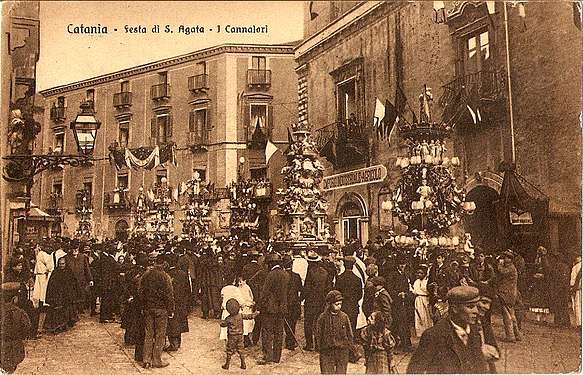
The city's patron saint is Saint Agatha, who is celebrated with a religious pageantry, the Festival of Saint Agatha, on 5 February every year.
The city is base of the newspaper La Sicilia and of the TV-channel Antenna Sicilia also known as Sicilia Channel. Several others local television channels and free-press magazines have their headquarters in Catania.
The city is home to the Catania Jazz Festival, which typically runs for several winter months with concerts in different locations.[78] In the late 1980s and during the 1990s Catania had a sparkling and unique popular music scene. Indie pop and indie rock bands, local radio station and dynamic independent music record labels sprung. As a result, in those years the city experienced a vital and effervescent cultural period. Artists like Carmen Consoli and Mario Venuti and internationally known indie rock bands like Uzeda came out of this cultural milieu.
The city is the home of Amatori Catania rugby union team, Calcio Catania football team and Orizzonte Catania, the latter being a women's water polo club, winning eight European Champions Cup titles from 1994 to 2008. Noted Italian basketball coach Ettore Messina is a native of Catania. The city also hosted the first ever qualification tournament for the Rugby World Cup Sevens in 1992, and the associated Etna Cup, which was won by the host Sicily team. In addition, the Catania Elephants are currently members of the Italian Football League. Catania also hosted the 2011 FIE Fencing World Championships.
Food and cuisine
Food is an important part of Catania's culture and way of life. Local cuisine emphasizes several traits of Sicilian one, whilst developing some of its own.
Street food is one of the best ways to experience traditional dishes. Arancini are perhaps the city's most iconic one: they are stuffed rice balls coated in bread-crumbs and deep fried; in Catania, they are shaped like a cone to remind of Mount Etna. Typical specialties from the city include cipollina (puff pastry with onion, tomato and prosciutto filling), bolognese (a small pizza topped with tomato, mozzarella, prosciutto and boiled egg and covered in puff pastry), crispelle (deep fried dough balls with ricotta or anchovies filling.)
During street-fairs and religious festivals, street stalls sell calia e simenza (toasted chickpeas and pumpkin seeds). Typical from old street markets are sangeli (cooked pork blood), quarumi (pork tripe), zuzzu (pork jelly), mauru (edible seaweed), and raw seafood. Horse meat is very traditional and it is sold in shops called arrusti e mancia ("roast it and eat it"), which roast the meat in streetside barbecues.[79]
Apart from street food, typical dishes from Catania are: pasta alla Norma (pasta with fried eggplant, tomato sauce and ricotta salata cheese), named after the namesake opera by Vincenzo Bellini; pasta cco niuru (pasta in cuttlefish ink), maccu (fava beans purée), bastaddi affucati or brocculi affucati (stewed cauliflower or broccoli), caponata (sautéed vegetables) and scacciata (a pie filled with tuma cheese) which is traditional during Christmastime.[80]
Catania is also famous for its pasticceria (pastries and cakes). Pastries vary according to season and to seasonal events: during the Festival of Saint Agatha, patron saint of the city, there are the cassatelle (small cassatas) and olivette (olive shaped almond paste). In Easter, there are aceddi ccu l’ovu (boiled eggs covered in biscuit). In summer there is granita. During the Festa dei morti (traditional celebrations in All Souls' Day) there are biscuits called ossa di mortu, rame di Napoli and nsuddi.
Drink kiosks are everywhere in town and serve soft drinks. Traditional soft drinks are made mixing fruit syrups with soda and other flavors such as anisette. They are thirst-killer and they are very popular with the locals and the tourists.
Local products include blood oranges, pistachios from Bronte, extra-virgin olive oil, cactus fruit, cherries, grapes from Mazzarrone, strawberries from Maletto, mushrooms, honey and wine.[81]
Transport
Catania has a commercial seaport (Catania seaport), an international airport (Catania Fontanarossa), a central railway station (Catania Centrale) and it is a main node of the Sicilian motorway system.
The motorways serving Catania are the A18 Messina-Catania and the A19 Palermo-Catania; extensions of the A18 going from Catania to Syracuse and to Gela are currently under construction.
The Circumetnea is a narrow-gauge railway that runs for 110 km (68 mi) from Catania round the base of Mount Etna. It attains the height of 976 m (3,202.10 ft) above sea level before descending to rejoin the coast at Giarre-Riposto to the North.
In the late 1990s the first line of an underground railway (Metropolitana di Catania) was built. The underground service started in 1999 and it is currently active on a route of 8.8 km (5.5 mi), from the station Nesima (West of town), passing through the stations of San Nullo, Cibali (still under construction), Milo, Borgo, Giuffrida, Italia, Galatea, Giovanni XXIII, to Stesicoro. These two stations, bringing Catania Underground in the city centre, have opened on 20 December 2016.[82] First line is planned to extend from the satellite city of Paternò to Fontanarossa Airport.
Catania Public Transportation Statistics
The average amount of time people spend commuting with public transit in Catania, for example to and from work, on a weekday is 56 min. 13% of public transit riders, ride for more than 2 hours every day. The average amount of time people wait at a stop or station for public transit is 23 min, while 46% of riders wait for over 20 minutes on average every day. The average distance people usually ride in a single trip with public transit is 4.7 km, while 3% travel for over 12 km in a single direction.[83]
Notable residents
- Aaron ben Gershon abu al-Rabi, 15th century rabbi
- Oriana Bandiera (1971–), economist and academic
- Pippo Baudo (1936-), TV presenter
- Franco Battiato (1945-), singer-songwriter, composer, filmmaker
- Gianni Bella (1947-), singer-songwriter
- Marcella Bella (1952-), singer
- Vincenzo Bellini (1801–1835), composer
- Ornella Bertorotta (1967-) politician
- Giuseppa Bolognara Calcagno (1826–1884), freedom fighter of the Risorgimento
- Vitaliano Brancati (1907–1954), writer
- Luigi Capuana (1839–1915), writer
- Charondas (6th c. BC), jurist
- Carmen Consoli (1974–), singer-songwriter
- Angelo d'Arrigo (1961-2006), aviator
- Federico De Roberto (1861-1927), writer
- Tea Falco (1986-), actress
- Giuseppe Fava (1925–1984), journalist, writer, playwright
- Turi Ferro (1921-2001), actor
- Rosario Fiorello (1960), comedian, singer, radio and TV presenter
- Libero Grassi (1924-1991), businessman
- Leo Gullotta (1946-), actor
- Andrea Lo Cicero (1976-), rugby footballer
- Miriam Leone (1985–), Miss Italia 2008
- Ettore Majorana (1905–?), physicist
- Nino Martoglio (1870–1921), writer
- Massimo Maugeri (1968–), writer and journalist
- Angelo Musco (1872–1937), actor
- Tuccio Musumeci (1934-), actor
- Giovanni Pacini (1796-1867), composer
- Luca Parmitano (1976-), astronaut
- Ercole Patti (1903-1976), writer and journalist
- Goliarda Sapienza (1924-1996), writer
- Giuseppe Sciuti (1834-1911), painter
- Piermaria Siciliano (1974–), swimmer
- Stesichorus (c. 630 – 555 BC), poet
- Giovanni Verga (1840–1922), writer
International relations
Consulates
The following countries have a Consulate in Catania: Azerbaijan, Bangladesh, Belgium, Finland, France, United Kingdom, Greece, Malta, the Netherlands, Romania, Senegal, Spain, Sri Lanka, South Africa, Switzerland, Ukraine.[84]
Twin towns – sister cities
Catania is twinned with:[85]


.svg.png)


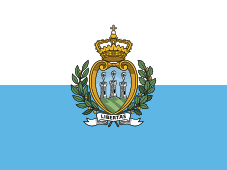


Influence on the planning of Adelaide, Australia
The site of what was to become the major Australian city of Adelaide was surveyed and laid out by Colonel William Light, the first Surveyor-General of South Australia. In 1823, Light had fondly written of Catania: "The two principal streets cross each other at right angles in the square in the direction of north and south and east and west. They are wide and spacious and about a mile [1.6 km] long". This became the basis for his plan of Adelaide.[86]
Notes
- Roman writers fluctuate between the two forms Catana and Catina, of which the latter is, perhaps, the most common, and is supported by inscriptions (Orell. 3708, 3778); but the analogy of the Greek Κατάνη, and the modern Catania, would point to the former as the more correct.
References
- "Superficie di Comuni Province e Regioni italiane al 9 ottobre 2011". Istat. Retrieved 16 March 2019.
- Official ISTAT figures
- "Catania" (US) and "Catania". Oxford Dictionaries UK Dictionary. Oxford University Press. Retrieved 8 January 2019.
- "Catania". Merriam-Webster Dictionary. Retrieved 8 January 2019.
- "Catania". Collins English Dictionary. HarperCollins. Retrieved 26 July 2019.
- "Catania history – Catania culture – Catania – attractions in Catania – art Catania – history guide Catania – Italy Katane". Travelplan.it. Retrieved 1 June 2010.
- "Catania history – Catania culture – Catania – attractions in Catania – art Catania – history guide Catania – Italy Katane". Travelplan.it. Retrieved 1 June 2010.
- "The meaning of the name Catania". Sicilia.indettaglio.it. 4 November 2006. Retrieved 5 April 2011.
- Holm Adolf (1925), Catania Antica, G. Libertini
- Amari, Michele. Edrisi, Il Libro di Re Ruggero (in Italian). I. p. 71.
- Various authors (1987). Enciclopedia di Catania (in Italian). Tringale.
- Correnti, Santi (1981). La Città Semprerifiorente (in Italian). Catania: Greco.
- Correnti, Santi; Spartà, Santino (2007). Le Strade di Catania (in Italian). Rome: Newton Compton.
- Giuffrida Tino, Catania dalle origini alla dominazione normanna, Catania, Bonaccorso. Excerpt here (in Italian)
- Climate Summary from Weatherbase.com (Catania, Italy)
- https://www.ilmeteo.it/portale/archivio-meteo/Catania
- "Climatological Information for Catania, Italy" – Hong Kong Observatory. Archived on 23 October 2019
- Thuc. vi. 3; Strabo vi. p. 268; Scymnus 286; Scylax § 13; Stephanus of Byzantium s. v.
- Strabo vi. p. 269
- Pausanias x. 28. § 4
- Conon, Narr. 43
- Philostr. Vit. Apoll. v. 17
- Gaius Julius Solinus 5. § 15
- Gaius Julius Hyginus 25
- Valerius Maximus v. 4. Ext. § 4
- Lucil. Aetn. 602-40
- Claudian. Idyll. 7
- Silius Italicus xiv. 196
- Auson. Ordo Nob. Urb. 11.
- Aristotle, Pol. ii. 9.
- Diog. Laert. ix. 2. § 1.
- Diodorus xi. 49, in 66; Strabo l.c.; Pind. Pyth. i., and Schol. ad loc.
- Diod. xi. 76; Strabo l. c.)
- Thuc. vi. 50–52, 63, 71, 89; Diod. xiii. 4, 6, 7; Plut. Nic. 15, 16.
- Diod. xiv. 15, 58, 60.
- Diod. xvi. 69; Plut. Timol. 13, 30–34.
- Diod. xix. 110, xxii. 8, Exc. Hoesch. p. 496.
- Athen. i. p. 22, c.
- Eutrop. ii. 19.
- Pliny the Elder , Naturalis historia, vii. 60
- Pliny the Elder , Naturalis historia, VII 214
- Plutarch, Life of Marcellus, 30
- Strabo, VI 2, 6
- Oros. v. 13.
- Cicero In Verrem iii. 4. 3, 83, iv. 23, 45; Livy xxvii. 8.
- Strabo vi. pp. 268, 270, 272; Dion Cassius iv. 7.
- Strabo 6.2.6
- Pliny iii. 8. s. 14; Ptol. iii. 4. § 9; Itin. Ant. pp. 87,90, 93, 94.
- Ferdinand II of Aragon became King of Naples as Ferdinand III, reuniting Naples with Sicily permanently and for the first time since 1458.
- Translation of an eye-witness account of the 1647 rebellion
- Enciclopedia Treccani
- Bombardamenti di Catania
- Bombardate l'Italia: 1943
- I bombardamenti aerei nel Mezzogiorno d'Italia
- The Invasion of Sicily 1943 By Jon Diamond, pp. 212–214
- Documentary about the conditions of the city after the financial turmoil (in Italian)
- "The Metropolitan Area of Catania defined by ANCI Sicilia (National Association of Comuni Italiani)". Anci.sicilia.it. Archived from the original on 8 December 2010. Retrieved 5 April 2011.
- Amari Michele (1933), Storia dei Musulmani di Sicilia, Catania, Nallino, Vol. I, pp. 344–345
- "Santissimo Sacramento Ritrovato – Home". Sacramentoritrovato.com. 16 March 2009. Retrieved 25 July 2009.
- "Santa Maria di Lognina". Etanland on line (in Italian). Archived from the original on 28 May 2009. Retrieved 20 August 2008.
- "Catania, Torre di Ognina" [Saint Mary's Tower of Ognina]. Mondi medievali (in Italian). Archeoambiente e Giuseppe Tropea.
- "Athena Longatis". Mythindex.com. Archived from the original on 27 April 2011. Retrieved 5 April 2011.
- "Home Page Parrocchia N.S. di Monserrato". Parrocchie.it. Retrieved 25 July 2009.
- La Mecca is not the Saudi holy city, but a vernacular Catanian word that identifies a "silk mill" that existed, in effect, in its vicinity.
- Commonwealth War Graves Commission – Catania War Cemetery
- Veterans Affairs Canada – Anciens Combattants Canada – Catania War Cemetery
- "La ricchezza del territorio italiano". webcache.googleusercontent.com. Archived from the original on 18 March 2004. Retrieved 1 June 2010.
- "home". Centroetnapolis.it. Archived from the original on 17 June 2010. Retrieved 1 June 2010.
- "Oggi la chiamano Etna Valley: i progetti, le aziende, il lavoro nel territorio di Catania". Etnavalley.com. 29 April 2010. Archived from the original on 27 May 2010. Retrieved 1 June 2010.
- "TripAdvisor Announces the Top Amusement Parks and Water Parks Around the Globe in Travellers' Choice Awards".
- Giuseppe Giarrizzo. "La nostra storia" [Our History] (in Italian). Archived from the original on 30 August 2012.
- "La storia dell'Ateneo scritta da Giarrizzo" [The History of the University by Giarrizzo] (in Italian). Archived from the original on 20 July 2012.
- "Scuola Superiore di Catania" (in Italian). Archived from the original on 3 August 2009.
- "Musical Institute Vincenzo Bellini – Official site". Istitutobellini.it. Archived from the original on 18 July 2011. Retrieved 5 April 2011.
- "Academy of Fine Arts of Catania". Italian official site. Retrieved 5 April 2011.
- Drabble, Margaret (1985). "The Oxford Companion to English Literature: Verga, Giovanni" (5th ed.). London: Guild Publishing: 1026. Cite journal requires
|journal=(help) - Drabble, Margaret (1985). "The Oxford Companion to English Literature: Verismo" (5th ed.). London: Guild Publishing: 1026. Cite journal requires
|journal=(help) - Catania Jazz Festival, Traghettiper-sicilia.it, retrieved 5 February 2017
- Catania, patria della carne di cavallo, retrieved 3 October 2019
- La scacciata catanese, le origini del piatto natalizio per eccellenza della tradizione etnea, retrieved 6 October 2019
- Elenco dei prodotti siciliani di qualità, retrieved 6 October 2019
- Underground railway of Catania from Subways.net and from CityRailways.net in (in Italian) and (translation)
- "Catania Public Transportation Statistics". Global Public Transit Index by Moovit. Retrieved 19 June 2017.

- MAECI, Cerimoniale diplomatico della Repubblica, Consolati di carriera ed onorari esteri in Italia. Roma, 21 novembre 2018
- "Catania Amica Del Mondo, Ecco Tutti I Gemellaggi Della Città Etnea". cataniaup.it (in Italian). Catania Up. 15 July 2019. Retrieved 13 December 2019.
- Johnson and Langmead, The Adelaide city plan: fiction and fact, Wakefield Press, 1986.
Sources
- Amico, Vito Maria (1740). Catana Illustrata.
- Correnti, Santi (1981). La Città Semprerifiorente. Catania: Greco.
- Correnti, Santi (2001). Cataniamia. Catania: Greco.
- Correnti, Santi; Santino Spartà (2007). Le strade di Catania, Rome. Newton & Compton.
- Various. Enciclopedia di Catania. Tringale.
- Ilaria Di Pietra, Catania. Viaggi e viaggiatori nella città del vulcano, Giuseppe Maimone Editore, Catania 2007
- Antonino Recupero, Catania. Città del mediterraneo, (Fotografia di Alfio Garozzo. Prefazione di Andrea Camilleri), Giuseppe Maimone Editore, Catania 2007, ISBN 978-88-7751-273-4

Further reading
External links
| Wikimedia Commons has media related to Catania. |
| Wikivoyage has a travel guide for Catania. |
| Wikisource has the text of the 1911 Encyclopædia Britannica article Catania. |

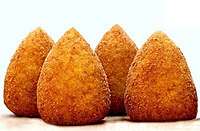
.jpg)

